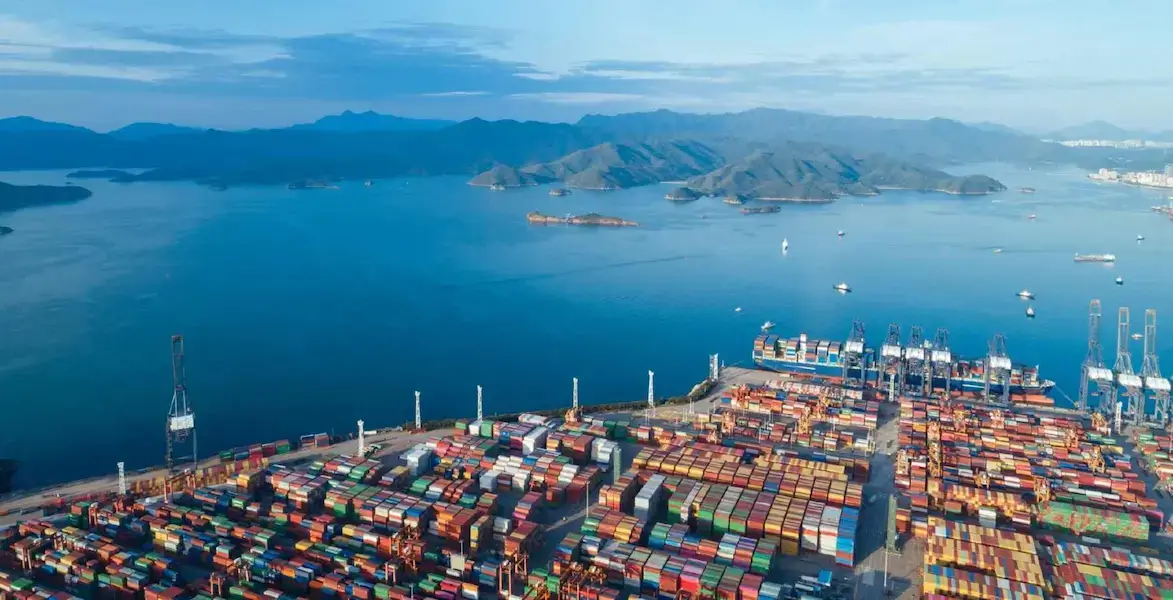Top Major Ports in China in 2024
Forget the Great Wall, China’s secret weapon is its coastline! A long network of harbours stretching for miles, each a bustling hub for global trade. These ports are the engines of China’s economic boom, importing and exporting goods worldwide.
China’s not just a manufacturing giant, it’s a global trade leader. These ports are the beating heart of its success, acting as vital links between China and the world.
Ready to meet the key players in this network? Explore the Top 10 Major Ports in China for 2024!
1. Port of Shanghai
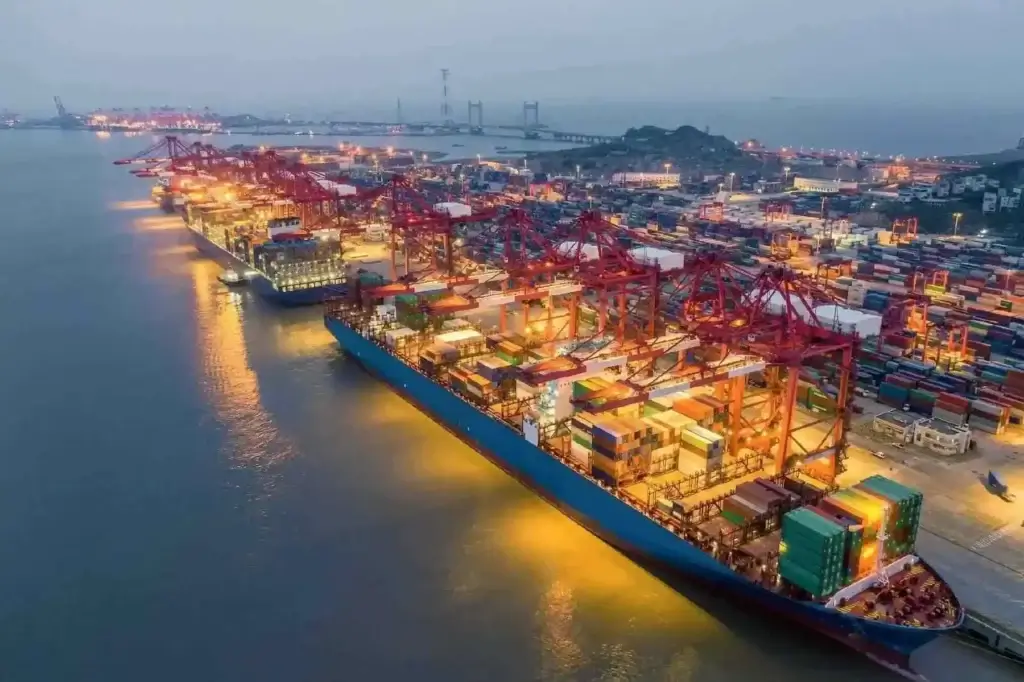
In January 2003, the Shanghai Port Authority underwent a restructuring that resulted in the establishment of the Shanghai International Port (Group) Co., Ltd. (SIPG), the operator of public terminals in the Port of Shanghai. In June 2005, it changed its legal status to a shareholder company, and on October 26, 2006, it commenced trading on the Shanghai Stock Exchange, becoming the first Chinese firm of its sort to do so.
The Port of Shanghai, located in the centre of the eastern shore of the Chinese mainland, is where the Yangtze River, often known as the “golden canal,” and coastal transit routes meet. It has access to both China’s southern and northern coasts, all of the world’s oceans, the Yangtze River basin, the inland rivers of Jiangsu, Zhejiang, and Anhui provinces, as well as the Taihu Lake basin.
The Port of Shanghai is located in a key geographic area with exceptional natural characteristics and a strong hinterland economy. It is served by well-connected road and railway networks as well as fully established cargo collecting and distribution systems.
Key Information
- Monthly throughput record: 4.20M TEU
- Total annual container throughput: 43.5M TEU
- Vessels in port: 2290
- Annual cargo tonnage: 514 million
- Number of employees: 13,546
- Top exports: Cars, integrated circuits, computers, telephones
- Top imports: Processors and controllers, iron ore concentrate, gold, medium-sized cars
- Top trading partners: United States, Japan, Hong Kong, Taiwan, United Kingdom and Germany
2. Port of Shenzhen
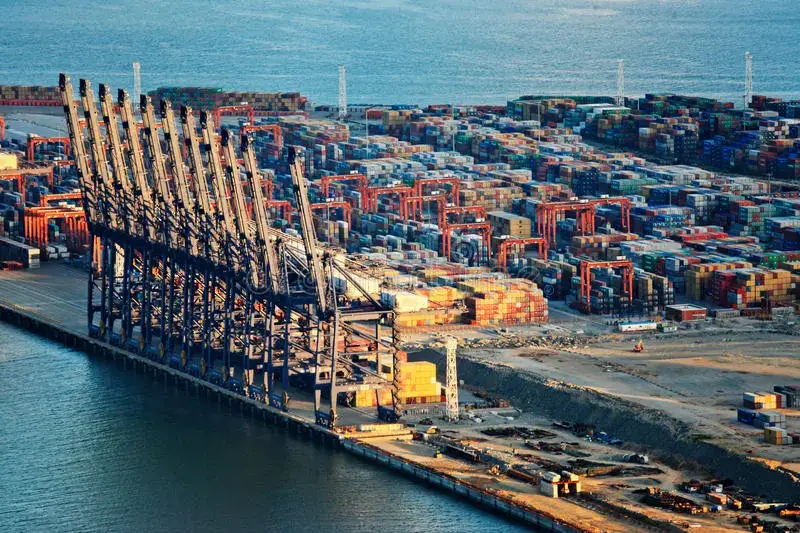
The Port of Shenzhen is located in China’s Guangdong Province, south of the Pearl River Delta. It is one of China’s most significant harbours in terms of foreign trade. Several ports along Shenzhen’s coastline are referred to as the Port of Shenzhen. It covers 260 kilometres of coastline. The Kowloon Peninsula also divides the port into two sections, the eastern and western ports.
The port is home to about 40 shipping companies’ headquarters, which have also opened about 130 international container lines. The Port of Shenzhen is also serviced by 230 international container routes. More than 300 ports in more than 100 nations are connected to Shenzhen.
The future of Shenzhen Port will see the implementation of the “two wings, six zones, and three main ports” layout. The east and west port groups are referred to as the “two wings,” while the “six areas” are the east’s Yantian and Dapeng port areas and the west’s Nanshan, Dachan Bay, Dachan Island, Xiaochan Island, and Bao’an port areas. Yantian Port, Nanshan Port, and Dachan Bay Port are the “three main ports,” emphasizing container shipping and highlighting Shenzhen Port’s fundamental competitiveness.
Key Information
- Container traffic in 2018: 27.7 million TEU
- Cargo tonnage in 2018: 194.9 million tons
- Coastal line: Stretches along 260 km of coast
- Container lines: 130
- Number of employees: 12,454
- Top exports: Mechanical and electronic products, computers, data processing devices, mobile phones, audio and video equipment
- Total foreign trade, including imports: 3.45 Trillion Yuan
- Three main ports: Yantian Port, Nanshan Port and Dachan Bay Port
3. Port of Ningbo-Zhoushan
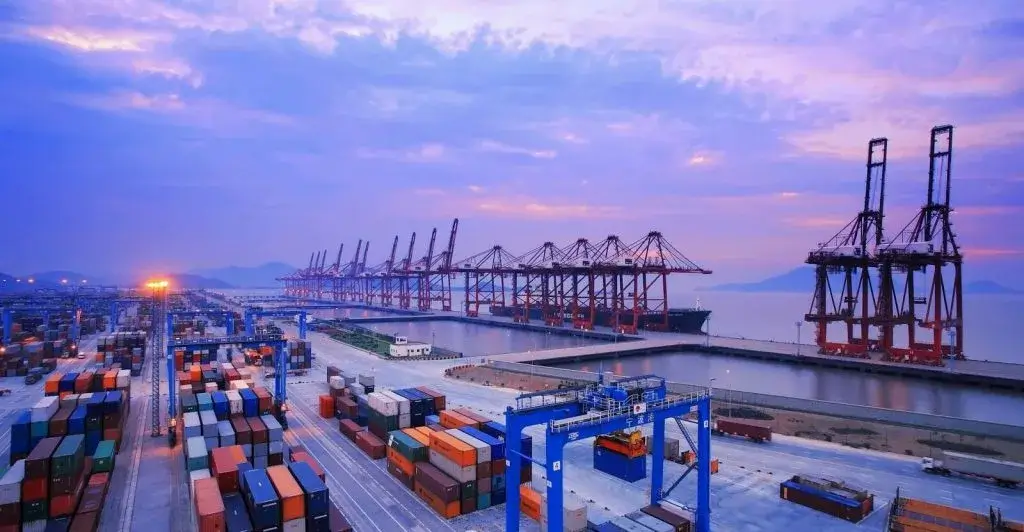
The port is a largely state-owned company of Zhejiang Province, Zhejiang Provincial Seaport Investment & Operation Group Co. Ltd., i.e. Ningbo Zhoushan Port Group Co. Ltd. (referred to as Zhejiang Seaport Group).
Zhejiang Seaport Group owns and runs more than 310 businesses with about 30,000 employees. Its primary businesses include the development and utilization of marine resources, investment in the marine industry, management and capital operation of resources related to the sea and ports, investment in the design and operation of ports, shipping services, storage, trading, and processing of bulk commodities, construction of marine engineering, and design and supervision of port engineering, among other things.
The group progressively combines port resources across the province per the idea of unified planning, building, branding, and operation. The group is dedicated to creating an integrated operating system and a top-notch contemporary port cluster by managing port assets in an integrated, extensive, and intensive manner.
With a coastline that stretches for 220 kilometres, Ningbo Zhoushan Port has a sizable port area. In addition to owning more than 200 big deep-water berths for boats over 10,000 dwt and more than 115 large and super-large deep-water berths for vessels over 50,000 dwt, it has 19 port regions. Most large and super-large deep-water facilities in Mainland China are owned and operated by Ningbo Zhoushan Port.
Since 2005, Ningbo Zhoushan Port has experienced a sharp increase in cargo volume. Ningbo Zhoushan Port’s container throughput in 2019 totalled 27.535 million TEUs, solidly placing it in third place globally. The total cargo throughput was 1.12 billion tons, putting it first globally for 11 years.
Key Information
- Container throughput in 2019: 27.535 million TEU
- Number of employees: 17,425
- Top trading partners: European Union, United States and ASEAN
- Total assets: 124.1 Billion
- Total value of imports and exports at the port: $270.77 Billion
- Largest import: Crude oil worth 153.48 Billion Yuan
4. Port of Guangzhou
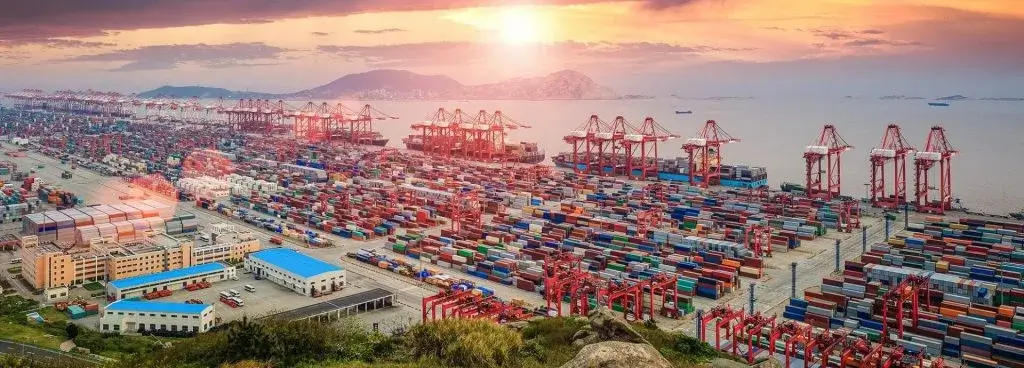
The primary seaport for Guangzhou City, Guangdong Province, China, is the Port of Guangzhou. Guangzhou Port Group Co. Ltd., a state-owned enterprise, runs the port. It is currently South China’s largest all-encompassing port. Over 300 ports in more than 80 nations and regions throughout the world are served by its international maritime trade.
The port is also the major transportation and economic hub for the Guangdong province and the Pearl River Delta. It is an important transportation centre for businesses in provinces nearby, including Jiangxi, Yunnan, Guangxi, Guizhou, Sichuan, Hunan, and Hubei.
In South China, the merger of the three most significant rivers, Dongxiang, Xinjiang, and Beijing, is where Guangzhou Port is located. A vital transportation hub is created by the intersection of the waterway, railway, motorway, and air routes for all three rivers. In the Pearl River Delta region, it serves as the primary port of concentration.
Key Information
- Container traffic: 24.2 million TEU
- Cargo tonnage: 600 million tons
- Minimum wage: US$300
- GDP growth rate: 8.3%
- Number of terminals: 8
- Top exports: Tea, silk, paper, copper, iron, gold and silver
- Major trading partners: U.S, Japan, South Korea, Hong Kong, Taiwan and Thailand
5. Port of Hong Kong
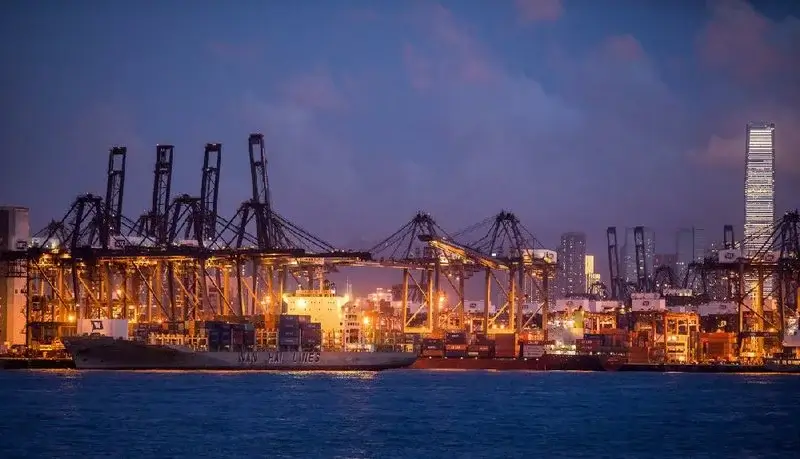
A deep water seaport near the South China Sea, the Port of Hong Kong, is mainly used to transport manufactured goods in containers, with raw materials and passengers coming in second and third. The natural harbour and deep waters of Victoria Harbor, which play a crucial role in Hong Kong’s economic development, offer perfect conditions for the berthing and handling of all vessel types.
In terms of maritime movements, cargo handling, and passenger carrying, it is one of the busiest ports in the world. For many years, the port was among the busiest—container ports in the world. From 1987 to 1989, from 1992 to 1997, and from 1999 to 2004, it ranked as the busiest cargo port in the world. In 2016, 25 869 container ships with a net registration tonnage of 386,853 tons passed through the container port in Hong Kong.
There are currently 11 separate yard sites used only for mid-stream activities, taking up 27.5 hectares of land and 3,197 meters of waterfront.
Key Information
- Container traffic in 2018: 19.6 million
- Cargo tonnage in 2018: 258.5 million tons
- Land area: 279 hectares
- Available berths: 24
- Main exports: cement, blank audio media, oscilloscopes, metalworking transfer machines
- Major imports: Equipment, manufactured goods and articles, chemical, mineral fuels
- Top trading partners: Taiwan, USA, Singapore, Korea, Japan, Vietnam and India
6. Port of Qingdao
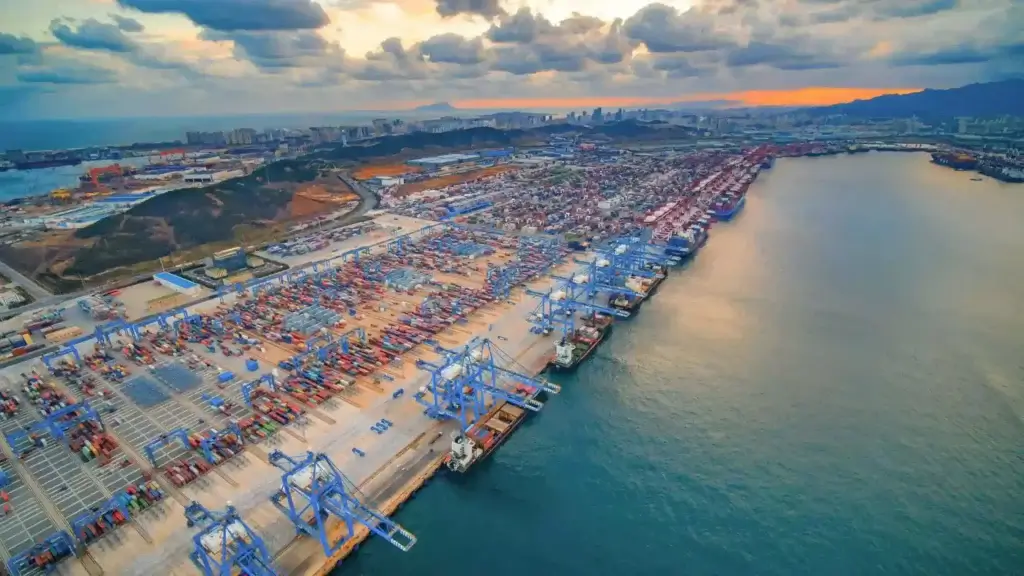
The Port of Qingdao is a seaport on the Yellow Sea in the vicinity of Qingdao, Shandong Province, People’s Republic of China. It is one of the ten busiest ports in the world.
In 2011, the Qingdao Port in Shandong Province, East China, joined forces with three other Chinese ports to form a strategic partnership with the largest port in the Republic of Korea (ROK). To establish a maritime and logistics hub in Northeast Asia, the ports of Qingdao in Shandong, Yantai, Rizhao, Weihai, and Busan in the ROK have joined forces to form the alliance.
Four sections of the Qingdao harbour serve as independent ports. Dagang and Qianwan manage freight and container traffic. The Qingdao port is an international terminal, whereas Qianwan predominantly deals in domestic containers. A sizable facility for handling iron ore cargoes is also present at the Qingdao port.
Key Information
- Container traffic in 2018: 18.26 million TEU
- Cargo tonnage in 2018: 600 million tons
- Alliance: Busan Port, South Korea
- Number of Employees: 9,218
- Major cargo handled: Grains, steel products, fertilizers, finish product oil, aluminum, frozen Products
- Top trade partners: ASEAN, the United States and the EU
7. Port of Tianjin
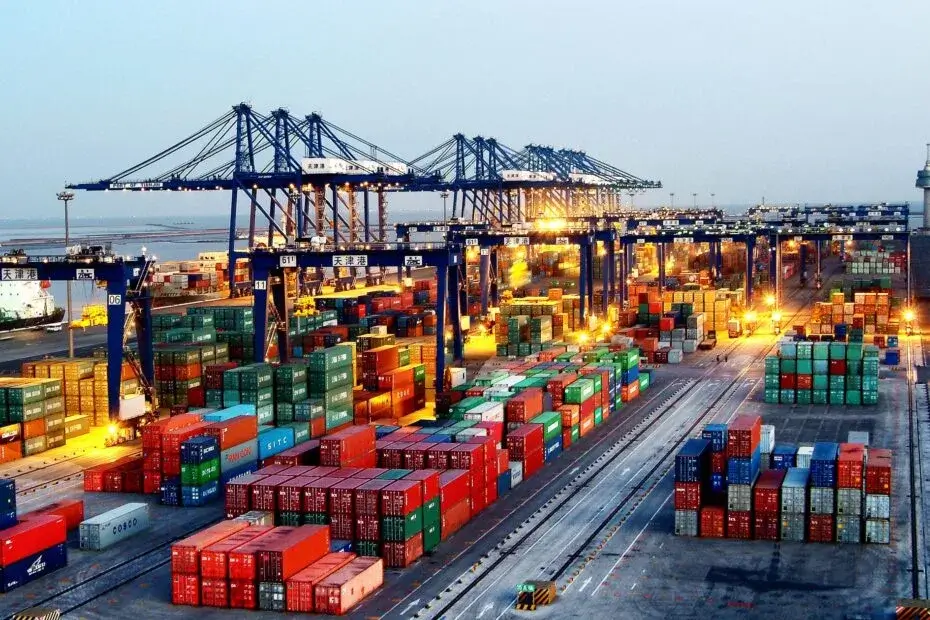
Tianjin, formerly known as the port of Tanggu, is the biggest port in Northern China. It is also acknowledged as Beijing’s primary maritime entry point.
Every year, this port handles 500 million tons of cargo on average. It has undergone massive expansions through the years to accommodate the significant volume of goods it handles. To boost its capacity rate, the port is being developed constantly. This port in China is constantly open. It serves both people and various kinds of freight.
The port is renowned for moving bulk liquid and oil cargo. It’s handling of freight containing liquid lye and propylene is one of its outstanding offerings. Additionally, it features roll-on and roll-off terminals for grain and other edible oils.
Key Information
- Container traffic in 2018: 15.97 million TEU
- Cargo tonnage in 2018: 428.7 million tons
- Top imports: Fixed-wing aircraft, unladen weight, soya beans, electronic integrated circuits, iron ore, medium-sized cars
- Top exports: Telephone sets, processors and controllers, bicycles, cargo containers
- Major trade partners: United States, Hong Kong, Japan, South Korea and Vietnam
8. Port of Dalian
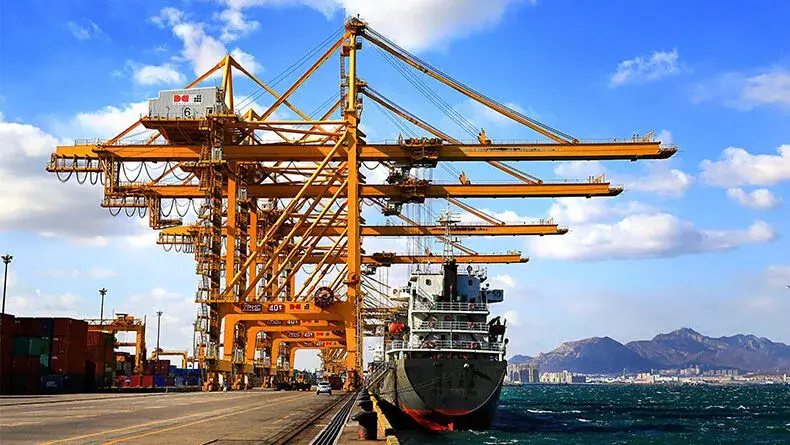
The Dalian Port has been in use since 1899 and is currently operated by the Dalian Port Corporation. The port is situated on the Liaodong peninsula in the Liaoning province. It is the most northern Chinese harbour where the water doesn’t freeze. The port has more than 80 berths as well. Ships carrying more than 10,000 tonnes of cargo can be docked at 50 of them.
The port mostly reloads refined oils, coal, grain, and mineral oil. More than 300 ports in 160 nations send ships to Dalian. The Dalian port serves over 90 trade routes, both domestic and international. It ranks as China’s second-largest transhipment hub.
The northern port of Dalian serves large portions of the Pacific coastline. It manages a sizable amount of the cargo and container traffic from Pacific Rim countries to North and Eastern Asia. It is a deep-water port that serves both the Yellow Sea and the Bohai Sea, and it is the second-largest transhipment hub on the Chinese mainland. Over 160 different countries’ ships are serviced at 300 ports.
Seven berths that were once held by Nippon Yusen, Singapore Dalian Port Investment, and PSA China are now operated by the Dalian Container Terminal (DCT). Rail and vehicle connections to the port are good. For goods and containers, there are also sizable storage areas. Deepwater berths that have been modernized typically have a depth of 16 meters.
Key Information
- Container traffic in 2018: 9.77 million TEU
- Cargo tonnage in 2017: 455 million tons
- Major trading partners: Japan, European Union, Saudi Arabia, United States and ASEAN
- Number of employees: 11,227
- Majorly handled cargo: Coal 15 million tons
9. Port of Xiamen
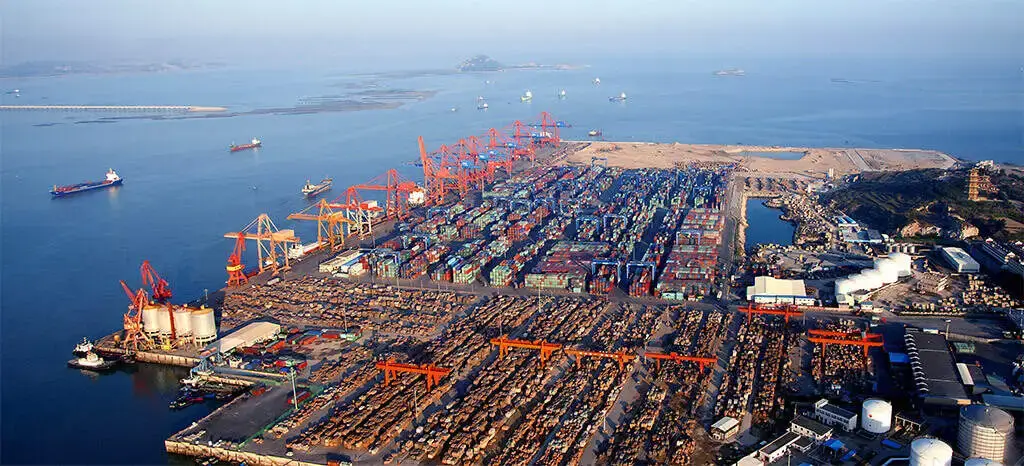
Xiamen is a deep sea port situated on the island of Xiamen along the Jiulongjiang River. It is ranked 17th in the world for cargo throughput— one of the few ports that can handle mega boats and sixth-generation ships. The Xiamen Municipal Government owns the bulk of Xiamen and manages it through the Xiamen Port Authority. It became one of the biggest ports in the world in 2010 after merging with the Port of Zhangzhou. Currently, it is South-East China’s largest port.
The port has 74 total berths spread across 12 separate operating zones. Nine are specifically designed terminals for handling containers; the remaining are for cargo. On average, these berths can process 10,000 tons of cargo, while some can handle 100,000 tons. The port extends across 30 kilometres of the harbour, with an average anchorage depth of 17 meters. Haitian, Liwudian, Dongdu, and Heping are a few operational zones.
Xiamen has cutting-edge technology and provides service to all major shipping lines. It handles almost 500 vessels per month from more than 50 nations and regularly runs 70 routes via the busiest ports in Europe, the Americas, and Africa. Additionally, the port runs a little passenger ferry that connects Xiamen to other ports on the mainland. Regular ferries run between Hong Kong, Guangzhou, Shanghai, and Wenzhou; service is also offered to Kinmen Island.
Key Information
- Container traffic in 2018: 10.7 million TEU
- Cargo tonnage in 2018: 218 million tons
- Major exports: Tea, salt graphite powder
- Major imports: Wheat, cement, chemical fertilizers, coal, rolled steel, sugar
- Major trade partners: ASEAN, U.S and European Union
Explore the top 10 logistics management software of 2024 – supercharge your supply chain now!
10. Port of Yingkou
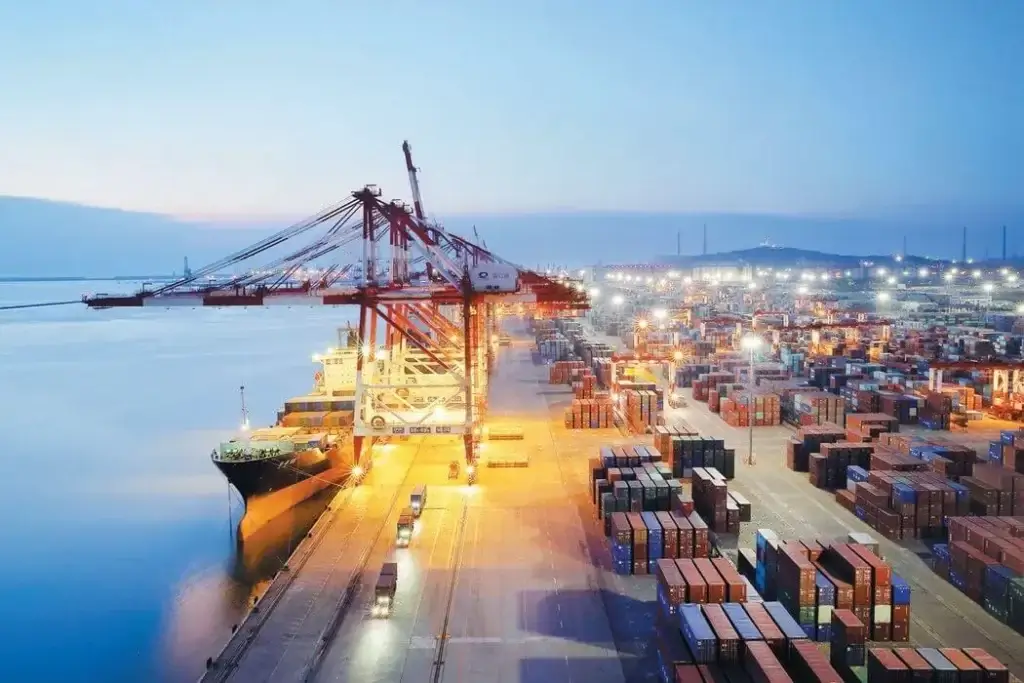
Yingkou Harbor is one of China’s smallest ports, but it is bigger than the largest ports in other countries. This port, which the Yingkou Port Group Corporation runs for the Republic, has 27 berths as well as numerous smaller docks and piers. The primary imports in this country are grain, coal, steel, and cars.
The main exports are foodstuffs, electronics, mass-produced commodities, containerized goods, and machinery parts.
The Old Yingkou Port on the Daliao River and the Bayuquan Port on the Bohai Sea are the two functional areas of the port. The seaport provides loading, pipeline transportation, pilotage, communication vessels, transportation by road and rail, and other services to incoming ships. Chinese Shipping Corporation (COSCO) and the port authorities jointly built the primary Bayuquan container terminal.
Key Information
- Container traffic in 2018: 6.5 million TEU
- Cargo tonnage in 2018: 21 million tons
- Main imports: Grains, coal, steel, vehicles, oil tar, minerals
- Main Exports: Container transfers
- Major trade partners: Japan, Korea, the U.S and the European Union
11. Port of Rizhao
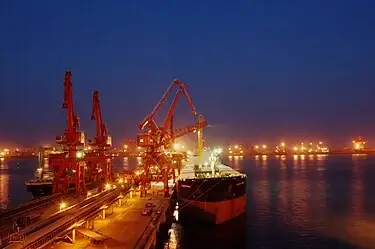
The Port of Rizhao, located on the southern shore of Shandong Peninsula, opens to the Yellow Sea, and is a natural deep-water seaport located in Rizhao, Shandong Province, People’s Republic of China. A total of 46 deep-water berths are available in two main port areas (Lanzhou Port Area and Shijiu Port Area). During 2012, it handled 284 million metric tons of cargo, making it China’s tenth busiest port.
The city port shares boundaries with Qingdao to the northeast, Weifang to the north, and Linyi to the west and southwest. Additionally, it faces Korea and Japan across the expanse of the Yellow Sea to the east.
- Container traffic: 1.8 million TEUs
- Cargo tonnage: 284 million metric tons
- Minimum wage: 1,550 RMB ($240) per month
- GDP growth rate: 8.5%
- Number of terminals: 46
- Top exports: Iron ore, coal, grain, steel, cement
- Major trading partners: Japan, South Korea, India, Vietnam, Indonesia
12. Port of Nantong
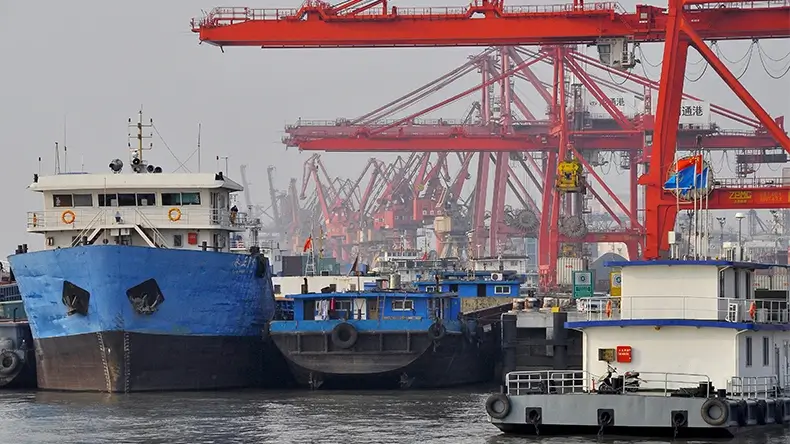
The Port of Nantong is a major port in the Yangtze River Delta of China. It is located in the city of Nantong, Jiangsu Province, and is a major gateway for trade between China and the rest of the world. The port is also a major hub for the oil and gas industry in China.
The Port of Nantong has a total of 9 river port areas and 3 coastal port areas. It has 88 berths, 65 hectares of yard space, and over 5 hectares of warehouses. In 2013, the port had a cargo throughput of 205 million tones, a growth of 10.6% over 2012. The Port of Nantong is one of the busiest ports in China and is a vital part of the country’s economic development. The port is well-positioned to continue to grow in the future as China’s economy continues to expand.
- Container traffic: 600,500 TEU
- Cargo tonnage: 205 million tonnes
- Minimum wage: 1,620 RMB/month
- GDP growth rate: 8.3%
- Number of terminals : 88
- Top exports: Machinery, textiles, chemicals, agricultural products
- Major trading partners: Japan, South Korea, the United States, the European Union
13. Port of Basuo
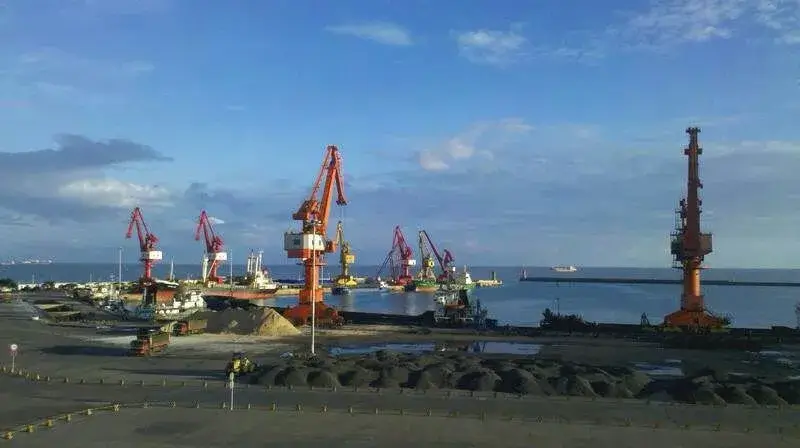
Port of Basuo is a deepwater port located on the east bank of Beibu Gulf, on the west coast of Hainan Island in the South China Sea. It is the most important sea trade portal in Hainan Province and has more berths capable of handling vessels over 10,000DWT than any other port on the island.
The Port of Basuo is expected to play an increasingly important role in the economic development of Hainan Province. The province is currently undergoing a rapid economic transformation, and the port is well-positioned to serve as a gateway for trade and investment.
In addition to its commercial importance, the Port of Basuo is also a popular tourist destination. The port is located in a beautiful coastal area, and there are several scenic spots nearby, such as the Basuo Mangrove Forest and the Basuo Beach.
- Container traffic: 1.2 million TEUs
- Cargo tonnage: 5.3 million tonnes
- Minimum wage: 1,410 yuan
- GDP growth rate: 8.5%
- Number of terminals: 10
- Top exports: Iron ore, iron, steel, cement, timber, local goods
- Major trading partners: China, Japan, South Korea, Vietnam, Singapore
14. Port of Haikou
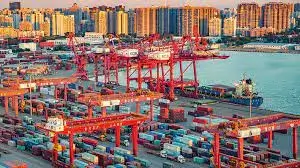
The Port of Haikou is a major seaport in China’s Hainan province. It is located on the northern coast of Hainan Island, facing the Hainan Straits. The port is the main distribution center for cargo entering Hainan, and it is also a major port for immigration.
The Port of Haikou has a long history, dating back to the Song Dynasty. It was first used as a seaport during the Song Dynasty, and it has been expanded and modernized several times since then. Today, the port is one of the busiest ports in China, and it handles a wide variety of cargo, including containers, bulk cargo, and passengers.
- Container traffic: 14.5 million TEUs
- Cargo tonnage: 150 million tonnes
- Minimum wage: 2,100 yuan/month
- GDP growth rate: 10.1%
- Number of terminals: 6
- Top exports: Electronics, garments, fruits, vegetables
- Major trading partners: Japan, South Korea, Singapore, United States
15. Port of Nanjing
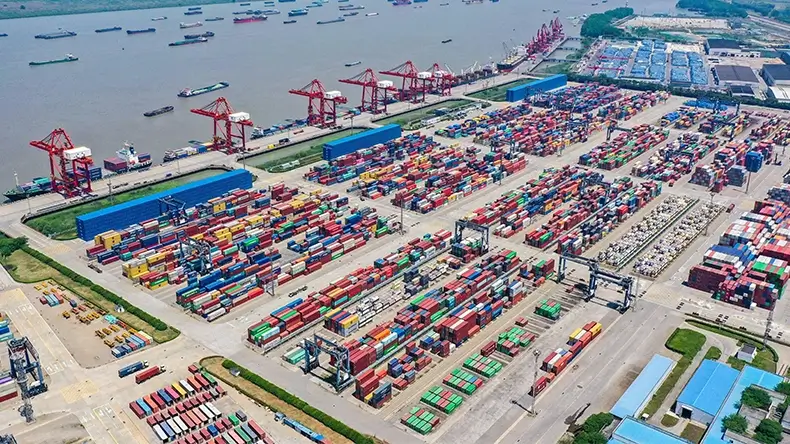
The Port of Nanjing is the largest inland port in the world, located in Nanjing, Jiangsu Province, China. The port is situated in the lower reaches of the Yangtze River, just before the start of the Yangtze Delta. It has authority over 208 km of Yangtze River shoreline, 110 km in the North Shore and 98 km in the South Shore.
The port is a major gateway for trade between China and the rest of the world, and it is also a major hub for domestic shipping. The port is home to a number of major industries, including petroleum, chemicals, and steel. The Port of Nanjing is a vital economic asset for Nanjing and for China as a whole. It is a major driver of economic growth and employment, and it plays a key role in China’s trade with the rest of the world.
- Container traffic: 11.2 million TEUs
- Cargo tonnage: 60 million tons
- Minimum wage: 1,620 yuan/month
- GDP growth rate: 8.5%
- Number of terminals: 23
- Top exports: Machinery, electronics, textiles, chemicals, agricultural products
- Major trading partners: Japan, South Korea, the United States, the European Union, ASEAN countries
Looking for a hassle-free shipping process with complete visibility on the movement of your cargo?
Fix a free walkthrough demo of how GoComet’s solution can give you a 100 percent multi-modal supply chain visibility and help you drive double-digit cost savings in your supply chain, while eliminating all the pain points you may currently face due to the lack of automation.
